Creating Habitat
Creating
Habitat
CREATE WILDLIFE HABITAT WITH NATIVE PLANTS
Wildlife habitat. What is it and why would you want critters in your backyard? And what kind of critters?
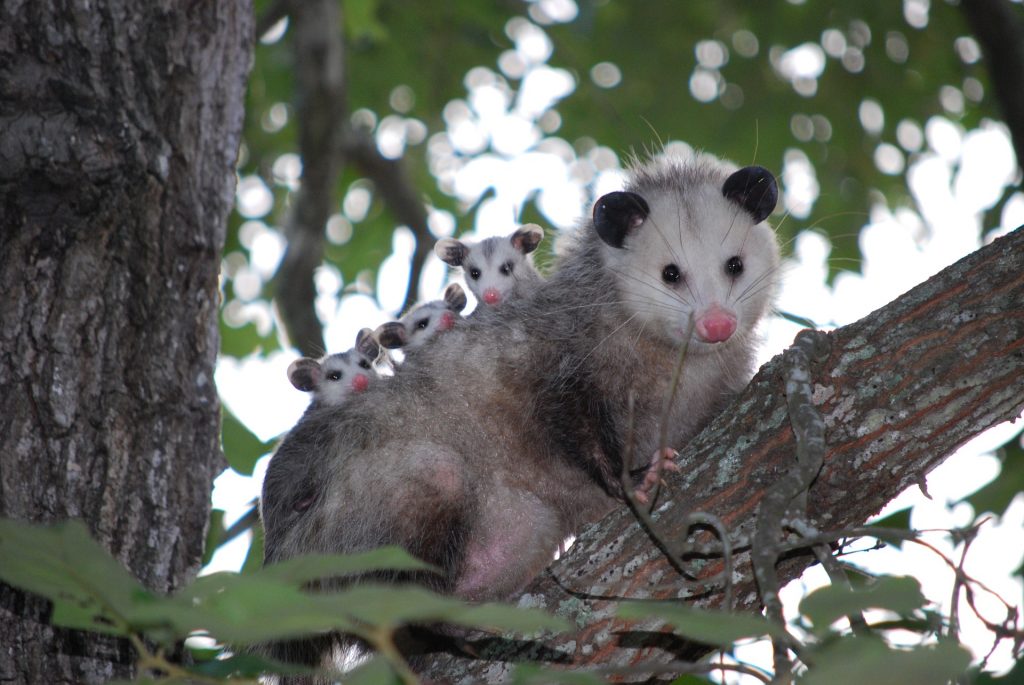
A mama opossum with her babies on her back.
ANIMALS NEED WILDLIFE HABITAT
But their habitat is disappearing at an alarming rate. And just like us, they need food, water, a place to nest & raise their young and shelter/cover from predators.
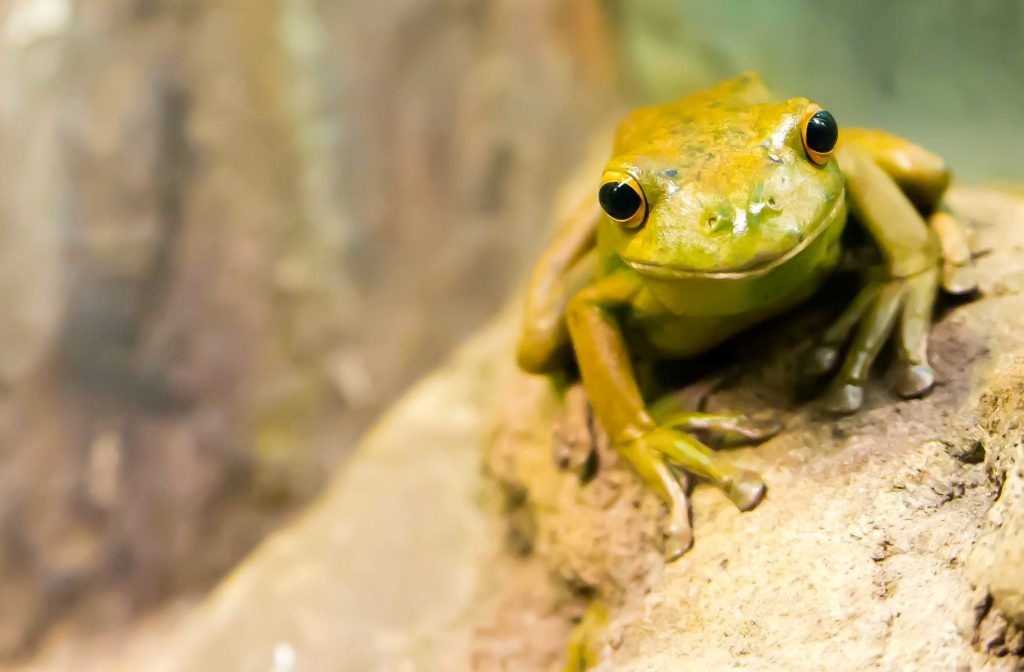
Frogs help keep insect populations in check. Photo: Wayne Robinson
There are so many animals that will benefit from improving your landscaping. Birds, butterflies, bees, opossums, turtles, flying squirrels (one of our favorites), frogs, lizards, deer, bear… The list goes on & on.
BUT WHY DO YOU WANT CRITTERS IN YOUR BACKYARD?
But back to the question, why would you want them in your backyard. Well, bats eats hundreds of mosquitos and opossums clean up all your overripe fruit and about 5,000 ticks a season. Butterflies are beautiful to watch and who doesn’t love a turtle ambling through your garden. Wildlife nourishes the soul, at least our souls.
When we set out to attract more butterflies and bees to our yard, we really didn’t think about other animals. Let’s put in native pollinator plants and we will have more butterflies or so our thinking went.
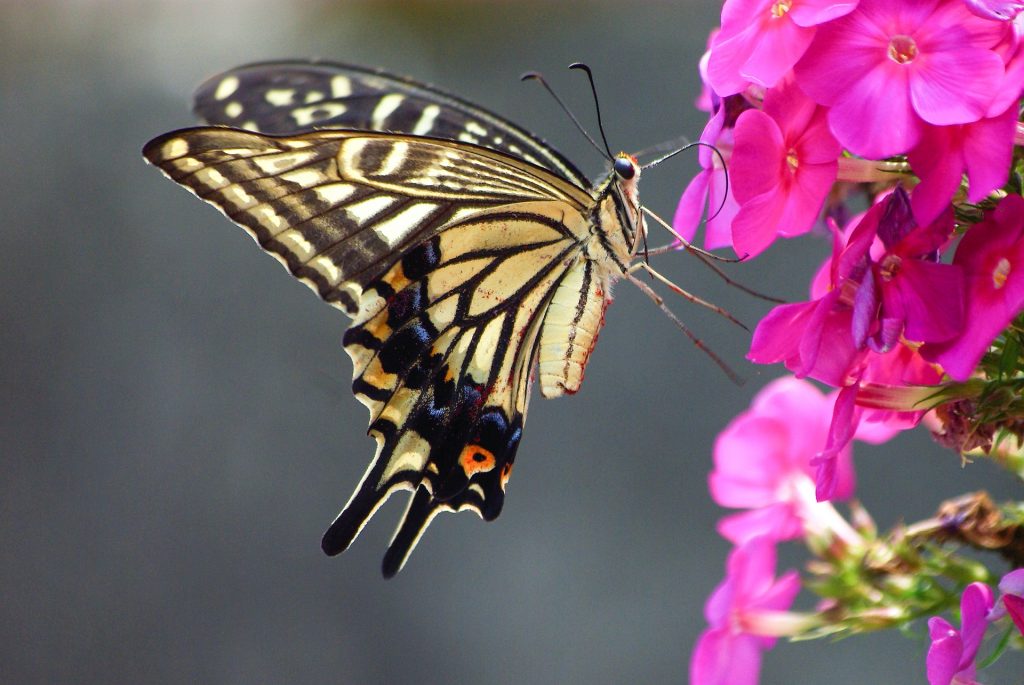
A butterfly getting nectar from a flower
Planting lots of milkweed, ironweed, coneflower, bee balm, black eyed susans and other nectar & host plants were just the beginning. But wait, what is a host plant?

Butterflies lay their eggs on host plants

A field of native black eyed susans which provide food to many pollinators
YOU NEED BOTH HOST AND NECTAR PLANTS FOR BUTTERFLIES
A host plant is a specific plant on which the butterfly will lay its eggs and then the emerging caterpillars will eat in order to turn into butterflies. Without host plants, there would be no butterflies and different host plants attract different butterflies. Then you need nectar plants to provide them with food.
LIZARDS, FROGS & OPOSSUMS, OH MY!
Now that we have butterflies taken care of, what about other animals. It turns out opossums love persimmon trees. Frogs need leaf cover to hide in during the day. Lizards like exposed rocks on which to sun themselves. Flying squirrels need seeds, slugs, spiders and anything they can find. And birds need insects to feed their young. Lots of insects!
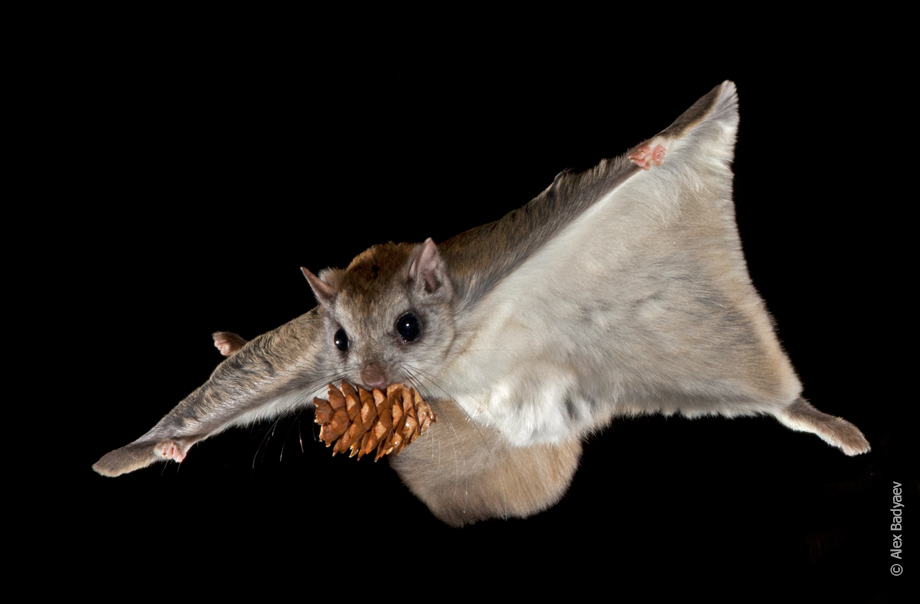
A flying squirrel glides through the air. Photo: Alex Badyaev/www.tenbestphotos.com.
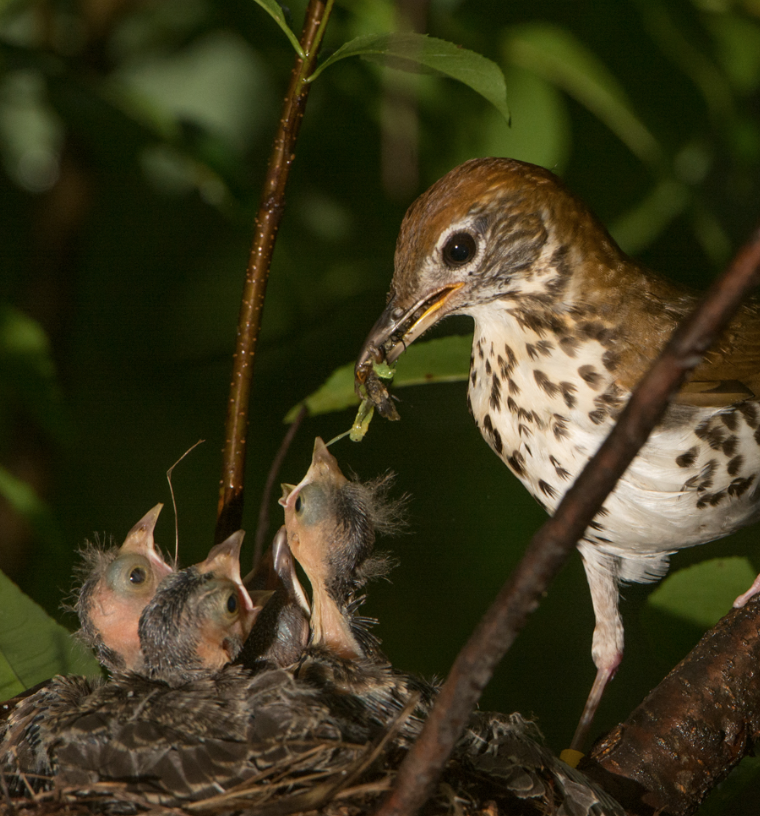
A thrush feeds her babies caterpillars. It takes hundreds of caterpillars each day to feed a baby
HOW MANY INSECTS DOES A BABY BIRD EAT?
Ok, how many insects? Well, let’s take a chickadee. Each chick needs more than 350 caterpillars a day for about 16 days until the baby fledges (leaves the nest) or over 5,000 catepillars. Then multiply that by the number of babies. That is a lot of bugs!
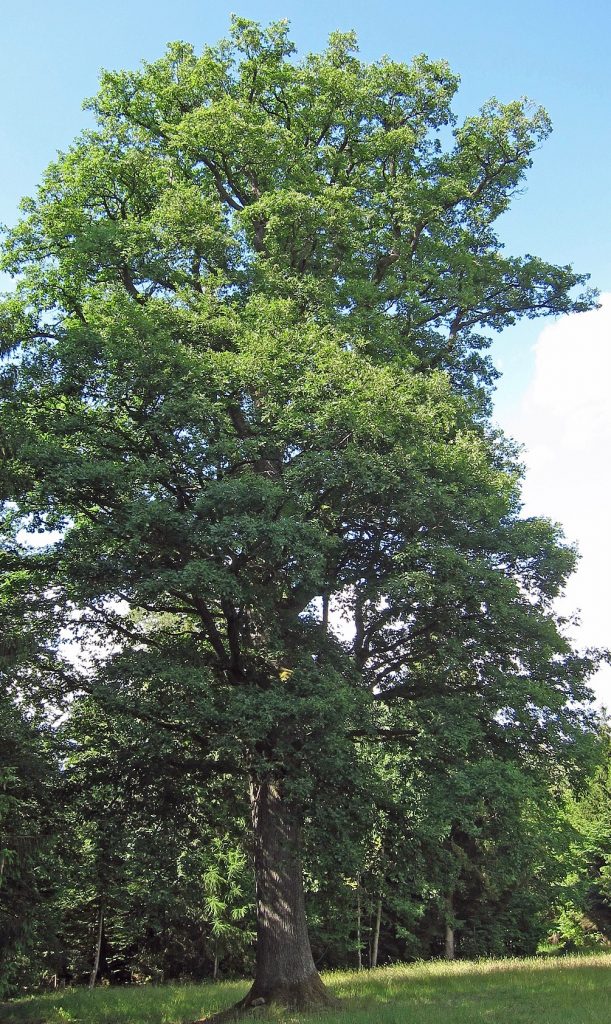
The oak tree is one of the most important native trees for wildlife providing food for hundreds of animals
And those bugs rely on native plants for 90% of their diet. So no native plants, no bugs, no birds. It is pretty simple.
A study was recently done where the number of caterpillars was counted on different trees in the same neighborhood. Guess how many were on a Bradford pear (non-native)? One. How many on an oak (native)? Four hundred & ten! More than enough to feed one baby chickadee for a day.
Oh, and the oak supplies acorns which are eaten by over 100 animals. Kind of a no brainer, if in fact, you want to help wildlife. To learn more about the importance of oak trees, read our blog Best Trees to Plant
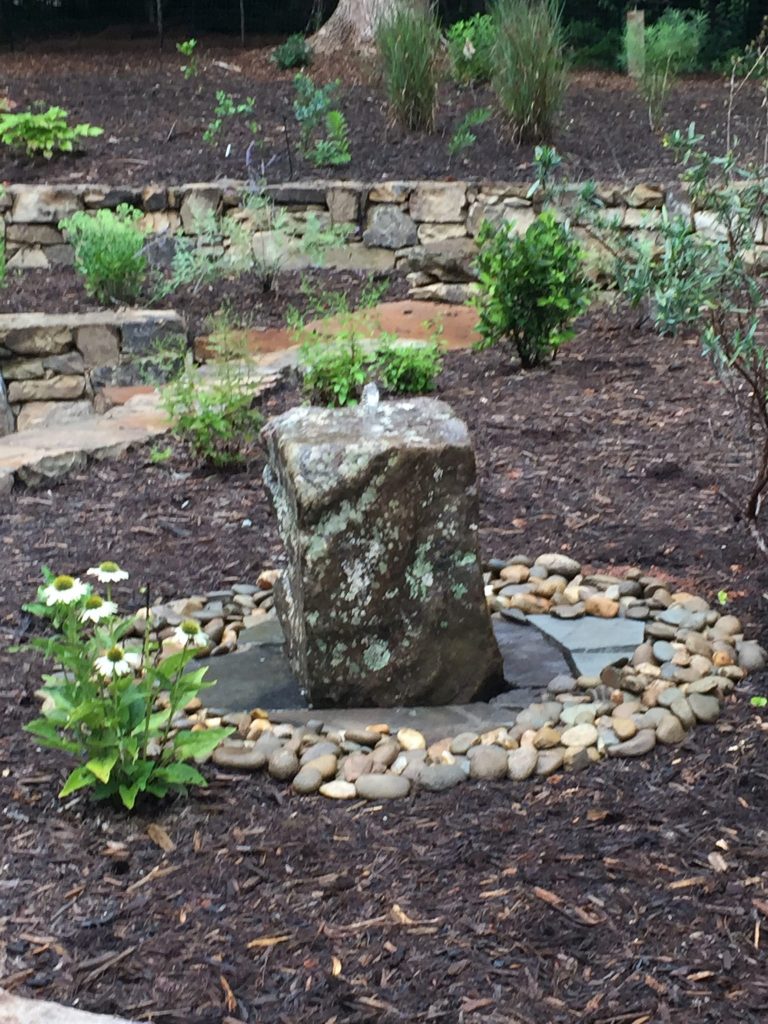
Animals need water in addition to food and shelter. Dale built this fountain for our backyard
ALL ANIMALS NEED WATER & SHELTER
And all animals need water and shelter. So Dale has created 2 fountains from rocks he found which provide water. It is so much fun to watch the cardinals and finches taking a bath in the fountain.
You can help bats by installing a bat house and providing lots of nectar flowers which will attract moths and flying insects which the bats eat. Many birds will benefit from birdhouses especially wrens, chickadees and bluebirds.

A wildlife habitat. And no, it is not ours but someday…
And while our garden doesn’t look like this picture (yet!), we are well on our way to attracting and helping our wildlife thrive. What’s in your backyard?
To Learn More:
There are numerous research publications that have useful info and lots of tips for planning wildlife habitat. Check out the following:
Landscaping for Wildlife with Native Plants
Pollinator Conservation Resource Center. Xerces Society
Bringing Nature Home: How You Can Sustain Wildlife with Native Plants by Doug Tallamy
